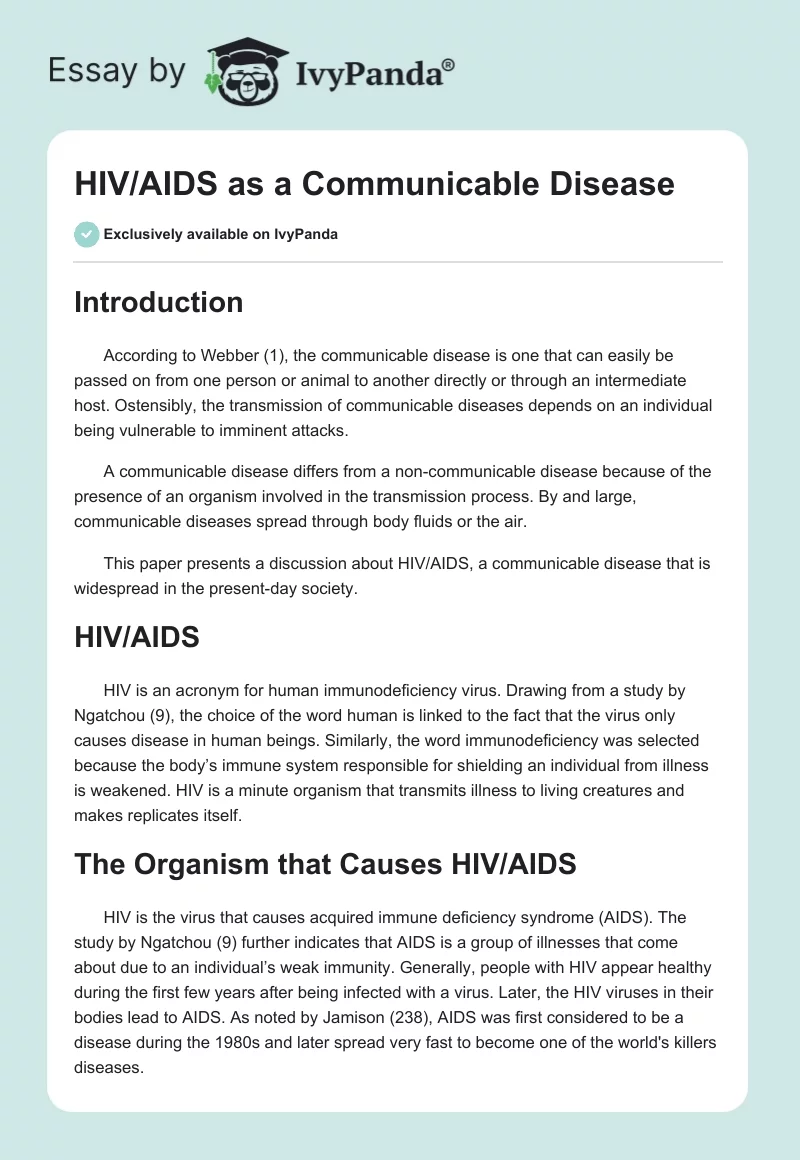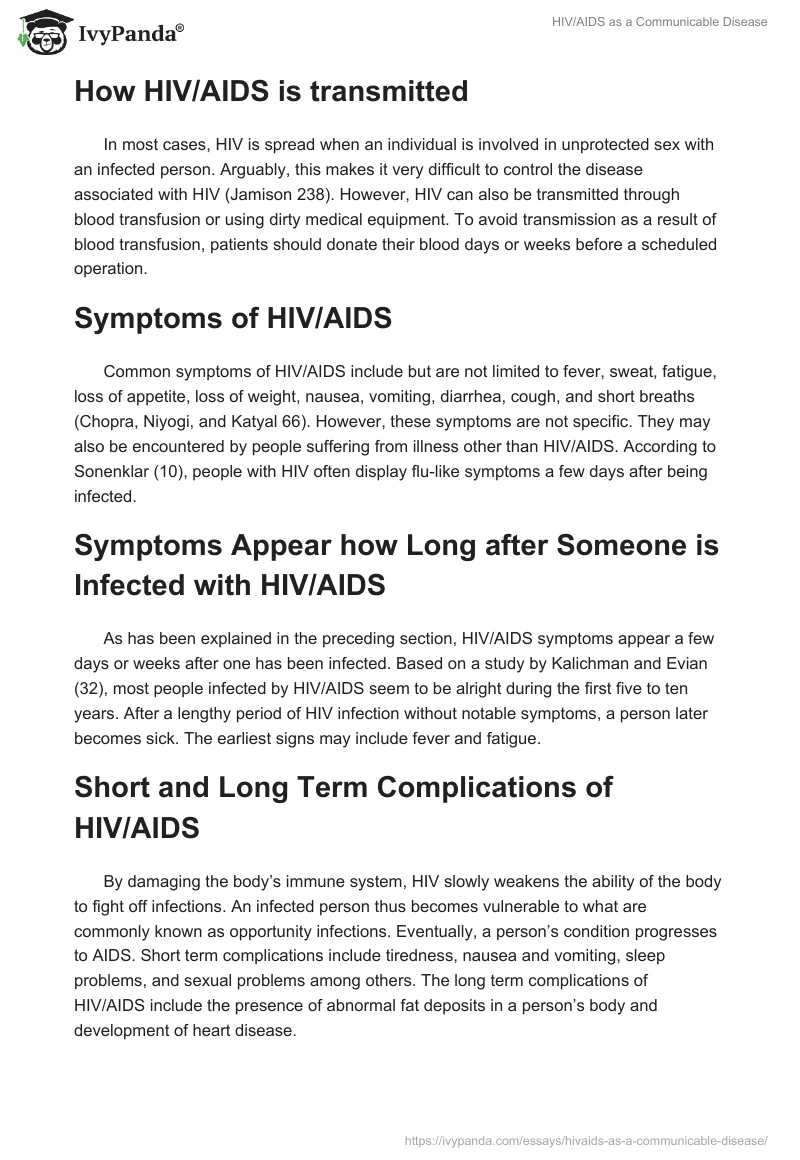Introduction
According to Webber (1), the communicable disease is one that can easily be passed on from one person or animal to another directly or through an intermediate host. Ostensibly, the transmission of communicable diseases depends on an individual being vulnerable to imminent attacks.
A communicable disease differs from a non-communicable disease because of the presence of an organism involved in the transmission process. By and large, communicable diseases spread through body fluids or the air.
This paper presents a discussion about HIV/AIDS, a communicable disease that is widespread in the present-day society.
HIV/AIDS
HIV is an acronym for human immunodeficiency virus. Drawing from a study by Ngatchou (9), the choice of the word human is linked to the fact that the virus only causes disease in human beings. Similarly, the word immunodeficiency was selected because the body’s immune system responsible for shielding an individual from illness is weakened. HIV is a minute organism that transmits illness to living creatures and makes replicates itself.
The Organism that Causes HIV/AIDS
HIV is the virus that causes acquired immune deficiency syndrome (AIDS). The study by Ngatchou (9) further indicates that AIDS is a group of illnesses that come about due to an individual’s weak immunity. Generally, people with HIV appear healthy during the first few years after being infected with a virus. Later, the HIV viruses in their bodies lead to AIDS. As noted by Jamison (238), AIDS was first considered to be a disease during the 1980s and later spread very fast to become one of the world’s killers diseases.
How HIV/AIDS is transmitted
In most cases, HIV is spread when an individual is involved in unprotected sex with an infected person. Arguably, this makes it very difficult to control the disease associated with HIV (Jamison 238). However, HIV can also be transmitted through blood transfusion or using dirty medical equipment. To avoid transmission as a result of blood transfusion, patients should donate their blood days or weeks before a scheduled operation.
Symptoms of HIV/AIDS
Common symptoms of HIV/AIDS include but are not limited to fever, sweat, fatigue, loss of appetite, loss of weight, nausea, vomiting, diarrhea, cough, and short breaths (Chopra, Niyogi, and Katyal 66). However, these symptoms are not specific. They may also be encountered by people suffering from illness other than HIV/AIDS. According to Sonenklar (10), people with HIV often display flu-like symptoms a few days after being infected.
Symptoms Appear how Long after Someone is Infected with HIV/AIDS
As has been explained in the preceding section, HIV/AIDS symptoms appear a few days or weeks after one has been infected. Based on a study by Kalichman and Evian (32), most people infected by HIV/AIDS seem to be alright during the first five to ten years. After a lengthy period of HIV infection without notable symptoms, a person later becomes sick. The earliest signs may include fever and fatigue.
Short and Long Term Complications of HIV/AIDS
By damaging the body’s immune system, HIV slowly weakens the ability of the body to fight off infections. An infected person thus becomes vulnerable to what are commonly known as opportunity infections. Eventually, a person’s condition progresses to AIDS. Short term complications include tiredness, nausea and vomiting, sleep problems, and sexual problems among others. The long term complications of HIV/AIDS include the presence of abnormal fat deposits in a person’s body and development of heart disease.
Works Cited
Chopra Parul, Rageshree Niyogi and Gauri Katyal. HIV and AIDS: Your Questions Answered. New Delhi, IN: Byword Books Private Limited, 2008. Print.
Jamison, Dean. Disease and Mortality in Sub-Saharan Africa. Washington, DC: World Bank Publications, 2006. Print.
Kalichman, Seth and Clive Evian. Questions and Answers about HIV and AIDS: Science. Gallo Manor, South Africa: Awareness Publishing, 2006. Print.
Ngatchou, Hugues. ABCZ of HIV/AIDS. North Carolina, United States: Lulu Press, n.d. Print.
Sonenklar, Carol. AIDS. Minneapolis, MN: Twenty-First Century Books, 2011. Print.
Webber, Roger. Communicable Diseases: A Global Perspective. Boston, MA: CABI, 2016. Print.


